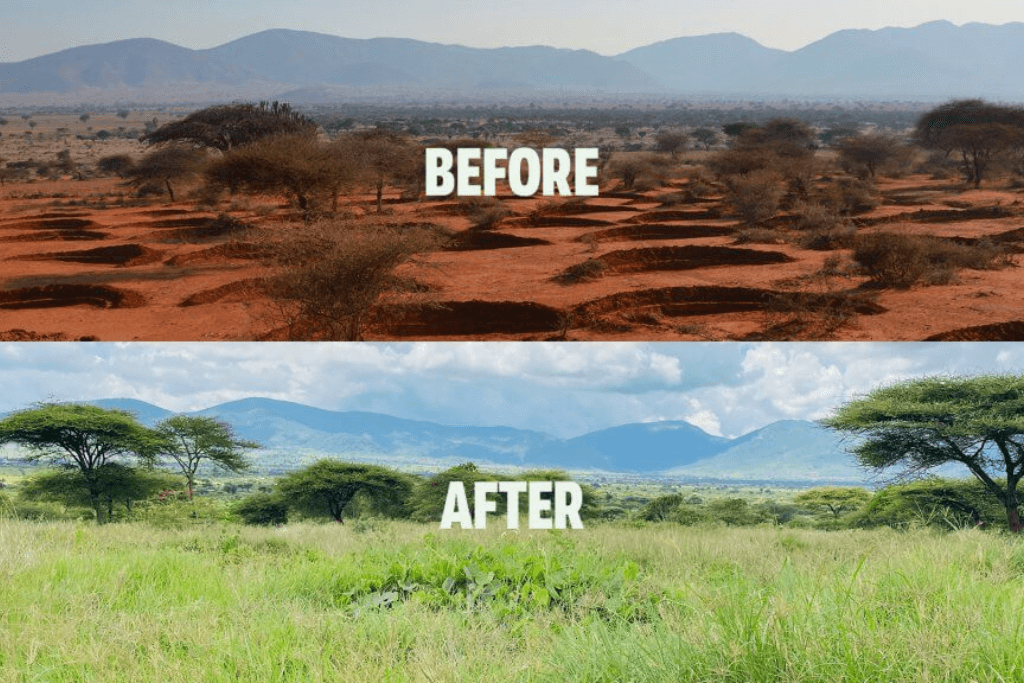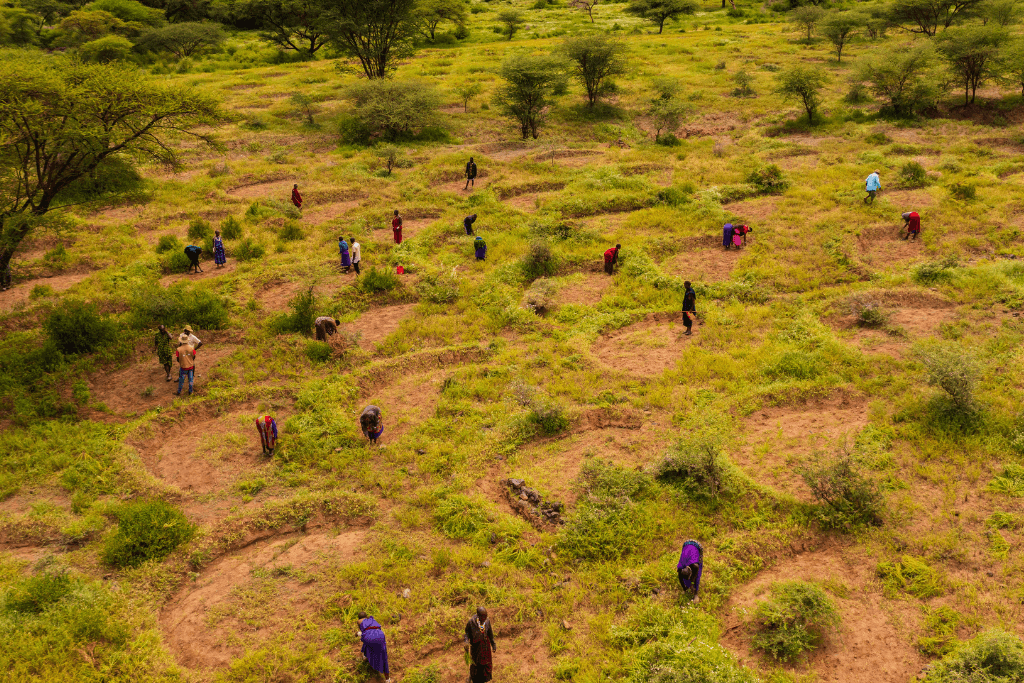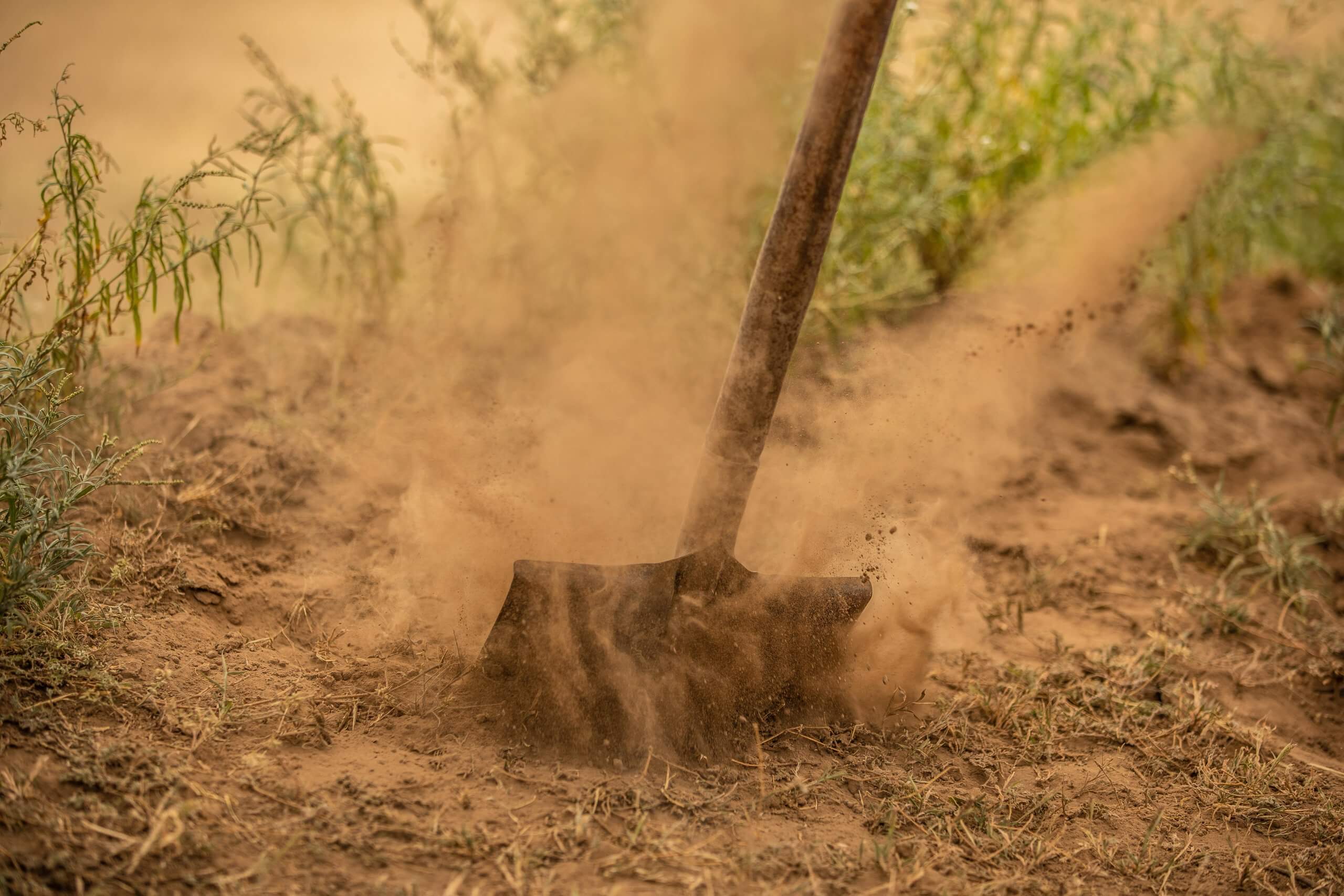Grazing management is essential for regreening!
Did you know that one of the most effective ways with which we regreen land is by not directly intervening at all? By implementing grazing management in certain areas, we give the soil a break and let nature do the heavy lifting. Here’s how it works.
The effects of overgrazing
Overgrazing is one of the main causes of land degradation. The term is used when wildlife or livestock excessively feed on pasture and the vegetation does not get enough time to recover.
We see the negative consequences of overgrazing in many of the areas we work. An example is our project area in Olgulului – Ololarashi (OOGR) in Kenya, where livestock of the Maasai pastoralists has eaten a large part of the vegetation. The roots of the vegetation are often also eaten, which makes it hard for the vegetation to grow back. Trees, shrubs, and grass species have disappeared, resulting in heavy erosion within the area. Overgrazing also has other negative consequences here, such as less food for the cattle, and increased competition between people and wildlife for water and food.
The solution: grazing management
Luckily, there is a solution to restore these rangelands: grazing management. By preventing livestock from grazing in the most vulnerable areas, these areas have time to recover. In our projects, we spread knowledge about the advantages and techniques of livestock and grazing management in various ways, always involving the Maasai communities.
Olopololi
But how do the Maasai pastoralists know in which areas there are rules for grazing? With the help of olopololi plots! An olopololi plot is a traditional Maasai grazing management technique, which we brought back to the area together with our partners, ACC and AET. The olopololi plots are marked areas of communal land, in which grazing is only allowed during specific periods, such as at the end of the dry season when there are fewer other places to graze or only for certain animals such as calves.
We use landmarks and awareness campaigns to inform local communities in which areas grazing rules apply. Grazing committees, consisting of 130 community members, are trained to supervise the sustainable management of the grasslands. They closely monitor the plots, so that the grass has time to grow back.






